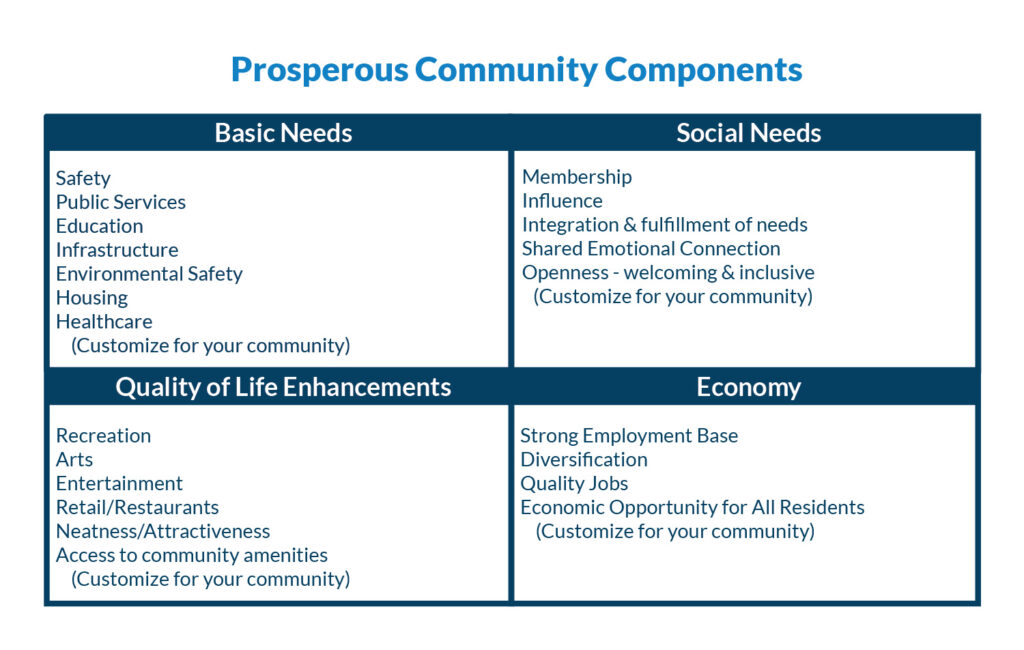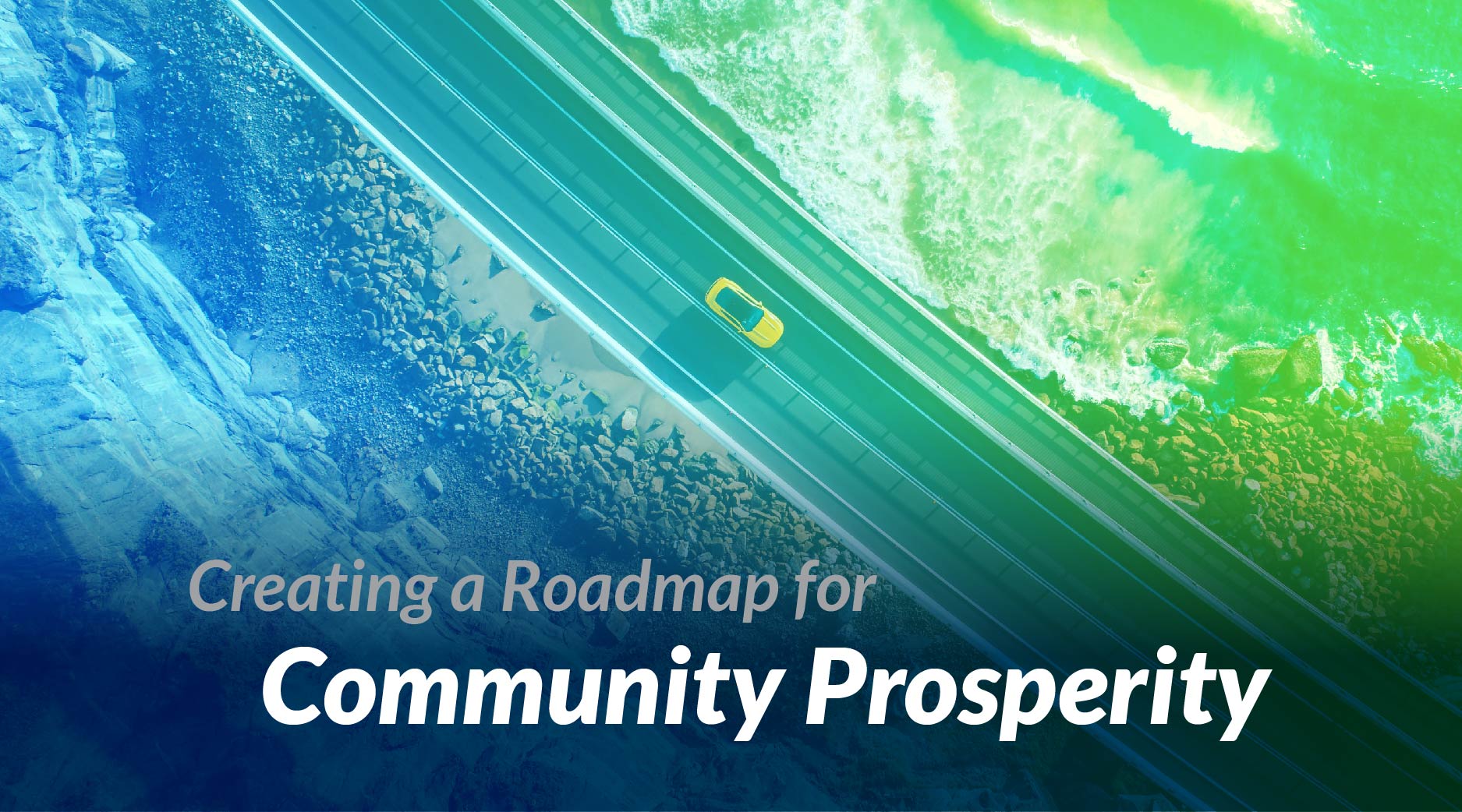If you are fortunate enough to live in a nice neighborhood and have a good job, you probably feel some degree of prosperity. Other residents of your community may be as prosperous as you or more so, while some are struggling just to get by. But, overall, would you consider your community to be prosperous? If out-of-town friends came to visit and you took them on a tour showing them the neighborhoods, retail shops, restaurants, local industries, and other “good” parts of town, would it be hard to avoid the “bad” ones? Several years ago, a mayor gave a group of economic developers including one of the authors a tour of his small southern town. He pointed out historic homes, a new city hall, and scenic river vistas, but when he drove through a blighted part of town, he asked everyone in the tour van to lower their window shades for a promotional video—an enterprising, if amusing, approach to community marketing. To address the question of “how prosperous is your community?” we need to first define the term.
Prosperity
Noun | pros·per·i·ty
Prosperity is a word with many connotations. If you were to walk down a main street sidewalk and randomly ask passers-by to define prosperity, most people would probably mention wealth, a good job, and other aspects of economic success.
You might also hear things such as a self-made person, a rising star, or terms similar to those found in various dictionary definitions of prosperity. Other respondents might have a much different perspective on prosperity. The Buddhist religion includes collectivism and spirituality in the definition of prosperity. Yourdictionary.com defines prosperity as “the state of being wealthy, or having a rich and full life.” Note the “or” in this definition, implying that wealth and a rich and full life are not necessarily related and either one can be a path to prosperity. Most people, however, might believe that wealth without a rich and full life is a vacuous kind of prosperity.

Each of us can embrace our own definition of personal prosperity, but how do we define community prosperity? More to the point, how should a community define prosperity for itself? Most residents, assuming they do not seek a back-to-nature lifestyle, would probably include a strong local economy with good jobs and economic opportunity for all in their definition of community prosperity. But, is economic success alone enough to call a community prosperous? What about the “rich and full life” and “self-made” aspects of prosperity in the aforementioned definitions?

Chapter 2 of Rebooting Local Economies asks readers to assess the current state of their communities and to consider how “prosperous” they are. However, this request begs two questions:
- What does community prosperity really mean and what are its components – economic success, quality of life, health and happiness, or what?
- What components of prosperity are most important for you as an individual and collectively for your community and where does the community stand relative to these priority components?
- What does community prosperity really mean and what are its components – economic success, quality of life, health and happiness, or what?
- What components of prosperity are most important for you as an individual and collectively for your community and where does the community stand relative to these priority components?
- Basic needs
- Social needs
- Quality of life enhancements
- Economy

Each component has numerous factors. For example, basic needs include safety and public services, and economy includes economic diversification and quality jobs. Since no community can have it all, communities need to prioritize the component factors that are most important to them; in other words, customize their Roadmap to Prosperity.

The tools for Chapter 2 are designed to help gather public input to assess the community’s current status and establish community priorities to customize the roadmap to prosperity. They provide the basis for a community visioning exercise in the Chapter 3 toolbox.
![2021 Prosperous Places Logo [TM]](https://www.prosperousplaces.org/wp-content/uploads/2021/02/20210205_JI_PPTM-Logo.png)



